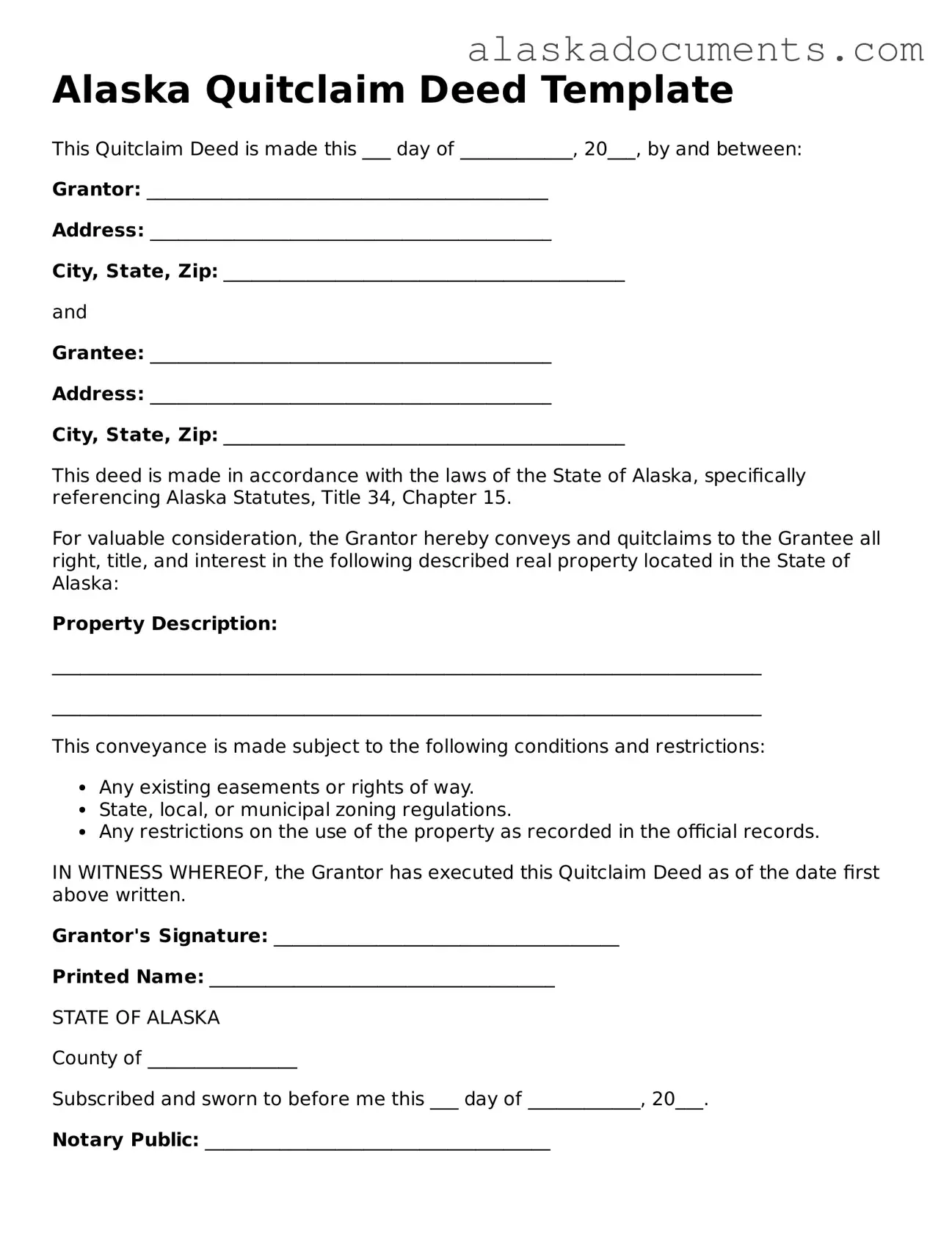Alaska Quitclaim Deed Template
This Quitclaim Deed is made this ___ day of ____________, 20___, by and between:
Grantor: ___________________________________________
Address: ___________________________________________
City, State, Zip: ___________________________________________
and
Grantee: ___________________________________________
Address: ___________________________________________
City, State, Zip: ___________________________________________
This deed is made in accordance with the laws of the State of Alaska, specifically referencing Alaska Statutes, Title 34, Chapter 15.
For valuable consideration, the Grantor hereby conveys and quitclaims to the Grantee all right, title, and interest in the following described real property located in the State of Alaska:
Property Description:
____________________________________________________________________________
____________________________________________________________________________
This conveyance is made subject to the following conditions and restrictions:
- Any existing easements or rights of way.
- State, local, or municipal zoning regulations.
- Any restrictions on the use of the property as recorded in the official records.
IN WITNESS WHEREOF, the Grantor has executed this Quitclaim Deed as of the date first above written.
Grantor's Signature: _____________________________________
Printed Name: _____________________________________
STATE OF ALASKA
County of ________________
Subscribed and sworn to before me this ___ day of ____________, 20___.
Notary Public: _____________________________________
My Commission Expires: _______________
This Quitclaim Deed form is intended for use as a primary document for property transfers in Alaska. It is advisable to consult a legal professional to ensure compliance with all local regulations and laws.
